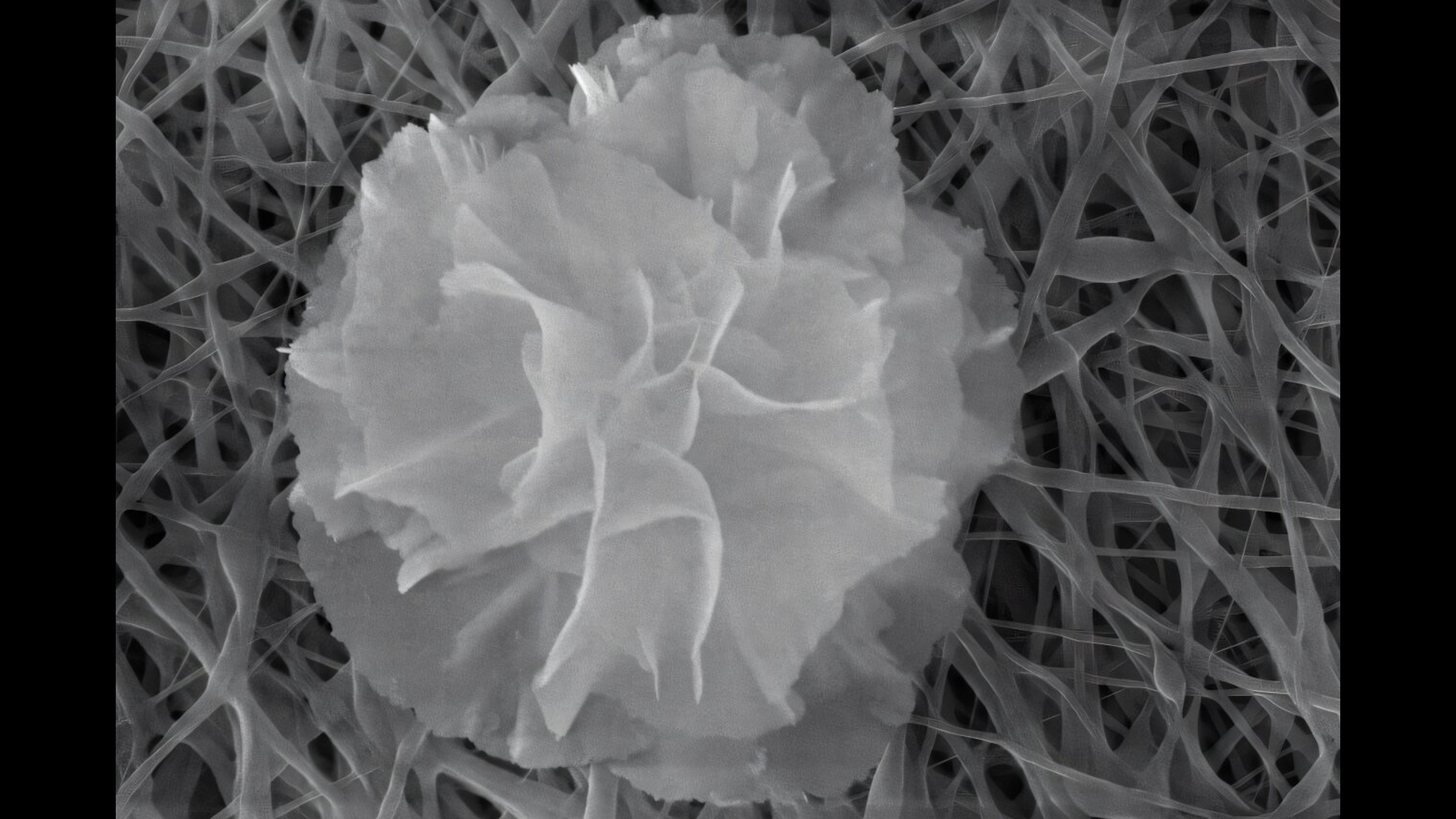Gadgets
Future bandages could be armed with nanoflowers

Flowers may be small, but their petals often add up to a comparatively massive amount of surface area. The same can be said even at the microscopic level of a “nanoflower,” compound combinations in chemistry that grow to form plantlike shapes. With this in mind, a research team based at Italy’s University of Genoa have designed a novel nanostructure that relies on carnation-like nanoflowers containing enough surface area to host numerous wound-healing drug molecules.
The medical innovation is detailed in a study published in the journal ACS Applied Bio Materials. According to its creators, the bandage prototype uses two polyphenol-based materials–copper phosphate and tannic acid. These reagents possess well-documented anti-inflammatory and antibiotic properties. Once mixed and placed in a saline solution, the copper phosphate-tannic acid compounds begin to self-assemble and grow into recognizable, flower-like structures. From there, researchers then carefully attached these nanoflowers on small strips of electrospun nanofabric.
“Polyphenols, natural compounds abundant in phenolic structures, have received widespread attention due to their antioxidant, anti-inflammatory, antibacterial, and anticancer properties, making them valuable for biomedical applications,” the team wrote in their study. “However, the green synthesis of polyphenol-based materials with economical and environmentally friendly strategies is of great significance.”
With the dressings ready for testing, the team introduced these nanoflower bandage samples into harmful bacteria cultures, including E. coli, Pseudomonas aeruginosa, and Staphylococcus aureus. According to an accompanying announcement on January 31st, the nanoflower-covered fabrics not only “inactivated” the bacteria, but did so through the addition of antibiotic-resistant biofilms—all while protecting lab-grown human cells.
Researchers say their new, nanoflower based approach appears to be both cost-effective and extremely efficient, allowing for better means to speed up wound healing and fight infections. The possible benefits from nanoflowers aren’t limited to medicine, either. Another study, published in October 2024 in Advanced Materials, points to uses across real-time imaging, wastewater purification, and even microrobotics.
-

 Destination8 months ago
Destination8 months agoSingapore Airlines CEO set to join board of Air India, BA News, BA
-

 Breaking News10 months ago
Breaking News10 months agoCroatia to reintroduce compulsory military draft as regional tensions soar
-

 Gadgets4 months ago
Gadgets4 months agoSupernatural Season 16 Revival News, Cast, Plot and Release Date
-

 Tech News12 months ago
Tech News12 months agoBangladeshi police agents accused of selling citizens’ personal information on Telegram
-

 Productivity11 months ago
Productivity11 months agoHow Your Contact Center Can Become A Customer Engagement Center
-

 Gadgets4 weeks ago
Gadgets4 weeks agoFallout Season 2 Potential Release Date, Cast, Plot and News
-

 Breaking News10 months ago
Breaking News10 months agoBangladesh crisis: Refaat Ahmed sworn in as Bangladesh’s new chief justice
-

 Toys12 months ago
Toys12 months ago15 of the Best Trike & Tricycles Mums Recommend























